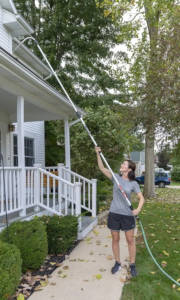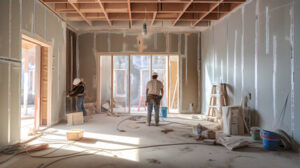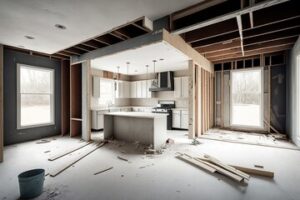Roofers Helena MT are becoming more than just tradespeople with hammers and nails. As weather patterns shift and home technology advances, their work evolves too. The role has grown into a blend of engineering, precision, and environmental science. Roofing now demands skills far beyond traditional construction knowledge.

Modern roofers are trained to understand how solar integration affects structural integrity. Solar panels, green roofs, and reflective membranes are part of their toolkit. These materials impact weight distribution and thermal performance. Roofers must balance function with the building’s architectural limits.
Climate modeling software is now being used during roof assessments. Roofers input building dimensions and regional weather data into simulations. This helps predict wind uplift, water pooling, and potential leakage areas. These digital tools improve safety and long-term performance.
Some roofers are using drone technology to perform preliminary inspections. These drones capture high-resolution images from various angles. Roofers then analyze footage to pinpoint damage without stepping foot on the structure. This method is safer, quicker, and highly detailed.
Thermal imaging is being used by roofers to detect hidden moisture. Wet insulation and trapped water pockets are invisible to the eye. Infrared scans show temperature variations across the surface. This tool prevents larger issues by catching problems early.
Roofers working with eco-friendly materials must understand biodegradation timelines. Some green products decompose faster than traditional types. The roofer must match materials with the expected weather conditions and lifespan. The goal is durability with minimal environmental harm.
Safety standards are also evolving with the rise of wearable technology. Some roofers wear vests or helmets that monitor vital signs and movement. If someone falls or overheats, alerts are sent instantly to the ground team. This innovation prevents serious injuries and promotes accountability.
New roofing techniques involve self-healing membranes and polymers. These materials repair small punctures when exposed to sunlight or moisture. Roofers must learn how to install and activate these unique components. Maintenance becomes easier and structures last longer.
The demand for noise-reducing roof systems is increasing in urban areas. Roofers apply multi-layered insulation and acoustic coatings. These additions block traffic, aircraft, and industrial sounds. It’s a subtle yet powerful change in urban design.
Cool roof technology is reshaping how heat is managed in buildings. Roofers install coatings that reflect more sunlight than conventional materials. This reduces indoor temperatures and air conditioning costs. It’s a simple fix with a wide impact on energy consumption.
Some roofers are now trained in weatherproofing smart homes. Rooftops integrate with systems that respond to humidity, wind, and temperature changes. Wiring and sensors are hidden beneath waterproof membranes. The installation process blends roofing with automation.
Structural reinforcement is a critical task in coastal or high-wind zones. Roofers install hurricane clips, braces, and impact-resistant panels. These additions support the roof under extreme conditions. It turns the roof into a shield against environmental threats.
Aesthetic customization is now part of a roofer’s expertise. Clients request shapes, colors, and textures that match specific design goals. Some materials are handcrafted or arranged in patterns. The roof becomes an artistic statement rather than a utility surface.
Data from satellite-based roof surveys is being used in roofer training. These models show elevation changes, slope angles, and material layering. Trainees study real-world cases in virtual classrooms. This speeds up learning while maintaining high standards.
Green roofs require specialized knowledge in horticulture and drainage. Roofers collaborate with landscapers and irrigation experts. Soil depth, root protection, and runoff control are carefully planned. This partnership ensures living roofs flourish without damaging structures.
Certain roofers specialize in historical restoration. These experts source traditional materials and replicate old craftsmanship techniques. They work with conservationists to preserve cultural significance. Restoration requires patience, research, and unmatched attention to detail.
Digital fabrication tools are also making their way into roofing. Roofers use CNC machines to pre-cut panels, tiles, and support brackets. This minimizes waste and shortens installation time. Efficiency meets accuracy through precision planning.
Ventilation design is becoming a core part of the roofer’s job. Poor airflow leads to mold growth, rot, and temperature imbalance. Roofers now calculate intake and exhaust ratios for optimal airflow. A well-ventilated roof prolongs the health of the entire building.
Modular construction has reached the roofing industry. Some roofs are pre-assembled off-site and lifted into place. Roofers handle the connection points and sealing process. This reduces on-site labor and weather-related delays.
Seasonal shifts are affecting how roofers plan their workload. Rainy or snowy periods require different materials and strategies. Some roofers use temporary roof covers during extended builds. Scheduling and planning are now a key component of their expertise.
Flexible roofing membranes allow for movement in seismic zones. Roofers apply these materials in layers with expansion joints. This flexibility prevents cracking during earth tremors. It ensures long-term performance in shifting environments.
Fire-resistant roofing systems are now required in many dry-climate regions. These include tiles made from recycled metal or treated clay. Roofers are trained to identify ignition risks and install barriers. The roof becomes a critical line of defense during wildfires.
Noise reduction during installation is also a growing concern. Roofers use quieter nail guns, padded platforms, and low-noise compressors. This respects the peace of the neighborhood during large-scale projects. Professionalism extends to sound control.
Roof maintenance programs are now offered as part of post-installation service. Roofers inspect, clean, and recoat at regular intervals. This proactive model reduces repair costs and extends life expectancy. Roofers build long-term relationships, not just structures.
Digital contracts and inspection reports streamline the customer experience. Roofers use apps to document each phase with photos and notes. Clients sign and receive records in real time. This builds transparency and legal protection for both sides.
Some roofers are pioneering recycled material systems. Old rubber, glass, and plastic are transformed into durable roofing panels. These materials resist weathering and lower the carbon footprint. Reuse becomes innovation in the hands of skilled roofers.
Training now includes weather adaptation techniques. Roofers learn to handle emergency patches, rapid waterproofing, and temporary reinforcement. These quick fixes are vital after storms or accidents. It transforms the roofer into a first responder.
Special equipment is used for steep-slope or vertical roofs. Roofers wear harnesses and use anchoring systems with friction brakes. Tools are tethered to prevent dropping hazards. Precision and safety are balanced with each step.
Cultural design integration is rising in residential roofing. Homeowners request symbols, emblems, or color palettes with personal meaning. Roofers execute these visions with attention and skill. The roof becomes a canvas of identity and pride.
Rainwater harvesting roofs are now part of sustainable architecture. Roofers install channels and collection tanks with built-in filters. The roof becomes a renewable resource in areas facing water scarcity. Innovation flows through every drop.
Thermo-adaptive tiles are gaining traction in high-temperature zones. These tiles change color or reflectivity based on ambient heat. Roofers install them with specialized adhesives and expansion buffers. The surface adjusts, cooling the home without electronics.
Smart drainage systems are used in roofs with complex geometry. Roofers incorporate sensors to track water flow in real time. If a blockage forms, alerts are sent instantly. Preventive action reduces flood damage and mold.
Some roofing tools are now voice-controlled or motion-activated. Roofers keep both hands free while adjusting settings or positioning tools. This enhances productivity and limits distractions. Smart tools reduce effort and improve safety.
Accessibility is a rising priority in commercial roofing. Roofers install walkways, rails, and maintenance zones for technicians. The surface must remain safe for decades of use. Roofing design now supports other professionals who depend on access.
Reflective pigments are being developed for use in dark-colored roofing. These pigments reject solar radiation while maintaining rich hues. Roofers can now install black or navy tiles without overheating the space. Dark style no longer compromises energy savings.
Ice-melt cables are being embedded into roof valleys and eaves. These cables prevent dangerous icicle formation and blockages. Roofers install them with controllers that respond to weather forecasts. The roof takes action before danger forms.
Contract-free emergency repair services are emerging. Roofers arrive within hours to assess, patch, and document damage. Clients pay per incident with no long-term commitment. This option supports flexibility and fast response.
Automation is slowly entering rooftop cleaning and inspection. Some roofers use robots or drones with brush attachments and sensors. These machines reduce the need for dangerous climbs. Maintenance becomes safer and more consistent.
Roof gardens are being adapted for urban food growth. Roofers prepare plots with soil trays, irrigation lines, and safety edges. The roof becomes a micro-farm above the city. Food security grows in unlikely places.
Roofers now collaborate with HVAC and electrical contractors. Rooftop units require precise coordination during installation. Each trade respects the structural limits and shared access zones. Harmony on the roof ensures performance below it.
With modern tools, digital skills, and environmental knowledge, the future of roofing is redefined. The roofer is now an innovator, artist, engineer, and protector. This craft evolves with every challenge the climate and architecture presents. And those who rise to the rooftop carry more than weight—they carry tomorrow’s shelter.








